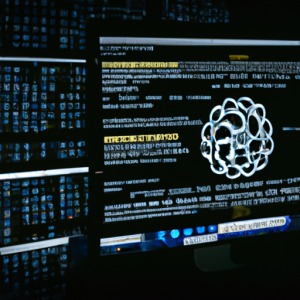As technology continues to evolve, so does the sophistication of cyber threats. One area that has seen a significant increase in potential vulnerabilities is the realm of Smart TVs. These devices, which offer a wealth of features and connectivity options, have become a prime target for hackers. This article will delve into the risks associated with Smart TV Hacking, and provide practical advice on how to protect yourself from such threats.
The Rise of Smart TVs
Smart TVs have become increasingly popular over the past decade. According to a report by Statista, as of 2021, there are over 1.1 billion Smart TV users worldwide, a number that is expected to grow to 1.4 billion by 2025. These devices offer a range of features, including internet connectivity, app usage, and the ability to stream content from various platforms.
What Makes Smart TVs Vulnerable?
While these features provide convenience and entertainment, they also open up potential security risks. The primary reason for this vulnerability is the internet connectivity feature. Just like any other device connected to the internet, Smart TVs can be targeted by hackers.
Internet Connectivity
Internet connectivity allows Smart TVs to access online content, download apps, and even browse the web. However, this also means that they are susceptible to the same types of threats that affect computers and smartphones, such as malware, ransomware, and phishing attacks.
Operating Systems
Most Smart TVs run on operating systems that are less secure than those found on computers and smartphones. This makes them an easier target for hackers. Additionally, many Smart TVs do not receive regular security updates, leaving them vulnerable to known exploits.
Privacy Concerns
Smart TVs often come with built-in cameras and microphones for features like voice control and video calls. If a hacker gains control of these, they could potentially spy on you and your family.
Real-World Examples of Smart TV Hacking
While Smart TV Hacking may seem like a theoretical threat, there have been several real-world examples that highlight the potential risks.

The Samsung Smart TV Hack
In 2017, WikiLeaks released a trove of documents allegedly from the CIA, which included information about a program called “Weeping Angel.” This program was reportedly used to turn Samsung Smart TVs into listening devices, even when they appeared to be turned off.
The Vizio Data Collection Case
In 2017, Vizio, one of the largest manufacturers of Smart TVs, was fined $2.2 million by the Federal Trade Commission (FTC) for collecting viewing data from 11 million devices without the users’ knowledge or consent.
How to Protect Your Smart TV from Hackers
While the risks associated with Smart TV Hacking are real, there are several steps you can take to protect yourself and your device.
Regular Updates
Just like with your computer or smartphone, it’s important to keep your Smart TV‘s software up to date. Regular updates often include security patches that fix known vulnerabilities.
Secure Your Wi-Fi Network
Securing your Wi-Fi network is another crucial step in protecting your Smart TV. This includes using a strong, unique password and enabling WPA3 encryption if it’s available.
Limit Use of Features
If you don’t use certain features on your Smart TV, such as voice control or video calls, consider disabling them. This can help reduce the potential attack surface for hackers.
Use a VPN
Using a Virtual Private Network (VPN) can help protect your Smart TV from potential threats. A VPN encrypts your internet connection, making it harder for hackers to intercept and steal your data.
Conclusion
Smart TVs offer a wealth of features and convenience, but they also present potential security risks. By understanding these risks and taking proactive steps to protect yourself, you can enjoy your Smart TV without worrying about potential cyber threats. Remember, the key to cybersecurity is staying informed and taking the necessary precautions.





